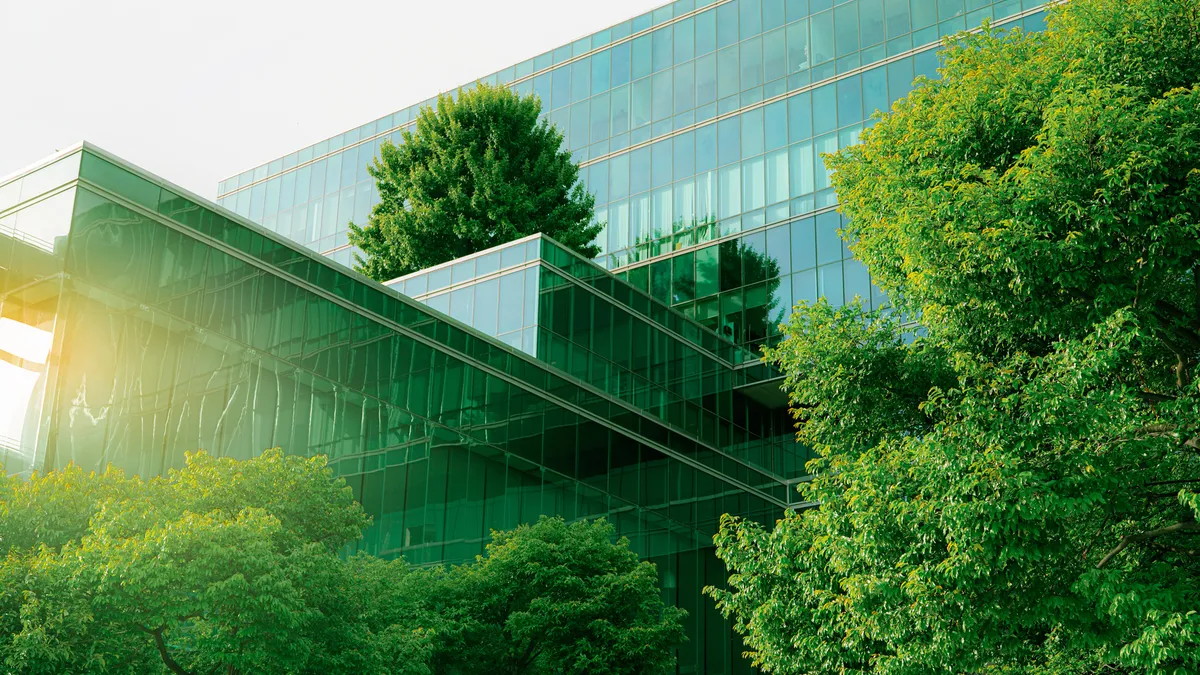As cities and private property owners look to make more of their buildings smarter, they are often faced with a choice: either modernize existing properties or start afresh.
Smart building technology has already been found to save companies up to 18% on utility bills according to a report by the American Council for an Energy Efficient Economy, but experts said the tech can also help with employees’ productivity and mood.
And the advent of 5G technology, combined with changing expectations for what people want from construction and design, could further impact an industry that is set to be worth $36 billion in 2020, according to a report from Zion Market Research.
How retrofitted buildings get smarter
For many companies, the high financial cost typically stands in the way of them simply demolishing their current buildings and redeveloping them with smart technology built in. Perhaps the easiest way for companies to make their older buildings smarter is to use sensors, which Michael Kruklinski, Head of Region for the Americas at Siemens Real Estate, told Smart Cities Dive can be a "drop in the bucket" in terms of overall costs.
Kruklinski said Siemens uses sensors to help manage their portfolio of older buildings, which can be connected to Wi-Fi to allow for good connectivity. That sensor-based management means the company considers how the space is used.
"What we're trying to do is take it to the next level, and that is by measuring the use of our site and looking at that data and then identifying what section of the building is being utilized, how much and by how many people, and how many people we have in the building," Kruklinski said. "We did this in the past by doing spot checks, and through these spot checks you get answers like, 'It was a holiday, it was Easter, it was Christmas, it was a snow day,' or whatever."
But older buildings retrofitted with newer technology may not work as well as they could. Arsalan Heydarian, an Assistant Professor in Civil and Environmental Engineering at the University of Virginia, told Smart Cities Dive that companies can sometimes get frustrated with technology as it can cause more problems than it solves.
That can include issues like motorized blinds moving up or down during meetings or lights not being at the correct brightness despite being on sensors. "We spend 80-90% of our time indoors, and still our buildings cannot detect exactly what is the lighting preference that you specifically need, and how it can adjust that,” he said.
Instead, buildings must be designed to be “smart around the user and not around the system,” which can be challenging in decades-old buildings that weren’t constructed with such innovations in mind. “It's something our buildings are not really designed to be like. Our buildings are really standardized, they're not flexible in a sense,” he said, noting that progress is being made.
When companies are faced with retrofitting an old building to make it smarter, Kruklinski said the best thing to do is test any new technologies on a small scale before expanding. “I think the biggest lesson probably is to start with a sample that is manageable,” he said. “It's big enough that you can draw some conclusions off it, the output investment is manageable, but it's not such a big chunk of money you can't do it.”
What starting anew could look like
When it comes to truly modernized buildings, experts say they could become smarter and use technology to help employees — even reacting to their emotions and helping people out. Heydarian described it as "emotional marketing," and it means that the building can automatically detect a change in emotions, be that due to the temperature, noise level or other factors.
The building could then intervene. "So if you're having a bad day and another occupant is having a good day, maybe the building can arrange you and this other occupant to have more of a social interaction that day that could potentially enhance your emotional state," Heydarian said.
And while that may sound like an intrusion onto people’s privacy, it is all to help the building collect long-term data and understand how emotions can change both over time and what factors can change them. "The building could get into this idea of actually enhancing your emotions, making you happier potentially in the work environment, which would have significant impacts on your productivity,” Heydarian said.
"So if you're having a bad day and another occupant is having a good day, maybe the building can arrange you and this other occupant to have more of a social interaction that day that could potentially enhance your emotional state."

Arsalan Heydarian
Assistant Professor in Civil and Environmental Engineering, University of Virginia
As well as reacting to their users’ emotions, new buildings being smarter and more connected is changing how they are designed and how space is used. Diane Hoskins, co-CEO of architecture firm Gensler, said at an Axios-hosted event hosted on 5G and smart cities that with the growth in technology, building designers are placing the emphasis on more social spaces, even in retail stores.
“It's the wonderful coffee bar, having a variety of different types of meeting areas, some of them are around a table but some are more soft seating," she said. "The ability to connect with others is being much more valued in the built environment, and we're seeing that change the way we design.”
Heydarian said that could go even further, with new buildings able to have features like movable walls to quickly and electronically change the nature of a space, perhaps switching from a meeting area to an evening networking event. The psychology of those that use a building is also being considered, he said. "When we are thinking about designing an office building, how much natural light it needs to have in the space, what colors are the types of colors that would enhance your ceilings in this space,” Heydarian said.
More flexibility in construction and planning
The process of designing and constructing a new building has gotten smarter in recent years too, as construction companies take advantage of new technology and make it easier for themselves, contractors, architects and the building’s owners to make changes on the fly. Kyle McQuiston of construction company JE Dunn said on a panel discussion at Smart Cities Connect in Kansas City, MO, that developing smart buildings "begins with building smartly."
Cleve Adams, CEO of AI-driven smart buildings performance platform Site 1001, said on the same panel that in building the Kauffman Center for the Performing Arts in Kansas City, builders kept a database that tracked every aspect of construction and inventoried site tools. They also integrated machine learning to predict the building’s maintenance needs, both during the building process and once it was operational.
And any changes that the design team wanted to make to the building during construction could be done easily through technology. For example, the builders could tweak a wing of the building on their screen due to a change in materials, and that change would show up automatically in the designs and renderings shown to those coordinating design. "It’s a seamless way to integrate the processes that for a long time have been disjointed somewhat," McQuiston said.
How 5G will change the game
And, others said, the influence of 5G is not to be underestimated. Telecom giants Verizon, AT&T, Sprint and T-Mobile all plan to start rolling the service out as early as later this year in select cities, and with it high-speed data should be widely available.
For upcoming buildings, it will mean greater integration of technology and the further growth of mixed-use, walkable communities, while sensors will be ubiquitous. Hoskins said that it will also help reduce carbon emissions while giving people more time to connect with each other.
"Through 5G technologies and IoT and having a more connected environment of sensors and other types of measures, we'll be able to balance those needs and balance the loads and in effect create a much more effective use of the energy that we bring into our cities," she said.


















